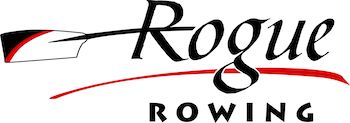Jackson County Parks has needed to generate its revenue since its 19 improved parks were pulled from the general fund in 2009. Steve Lambert, the County Parks Manager was quoted as saying “We’ve had to modify our business model. Frankly, some of the parks would be closed years ago if we hadn’t.” This has meant managing their RV parks and amenities and looking for other sources of revenue. Review of the 2015-2016 Jackson County Budget indicates that a primary goal for the Parks and Recreation Department is to fund “capacity increasing projects in County parks. (https://jacksoncountyor.org/Departments/Administration/County-Budget).
The Emigrant Lake Outdoor Center is precisely such a project and is perfectly aligned with the Oregon Outdoor Recreation Initiative. This initiative, established in 2017 and spearheaded by TravelOregon, is a statewide effort to bring together businesses, agencies, land managers, conservation groups and recreational user groups around the goal of expanding access to outdoor recreation and increasing the economic impact and sustainability of Oregon’s outdoor recreation economy.
The Rogue Valley has an interest in non-motorized water sports that is increasing steadily. For example, SUP, which was in its infancy a few years ago, is now a leading activity at Emigrant Lake, with specialized vendors and SUP enthusiasts who would benefit from resources that support this healthy and low environmental-impact sport. A strong sailing community in the valley has long lacked a headquarters, and the same applies to kayakers and canoeists.
Also among this trend is Rogue Rowing, which has grown from 100 overall members three years ago to over 250 members currently (130 masters, 60 juniors, 40 plus collegiate and a growing number of adaptive rowers) with projections that these numbers could as much as double during the next three years. Expanding infrastructure to accommodate this demand is precisely the sort of “capacity-increasing project” that will address the County’s objectives.
Southern Oregon has long been a premier destination for theater lovers and music enthusiasts. The region also offers a wide range of outdoor and wilderness activities, including fishing, hiking, cycling, alpine and nordic skiing, and white-water sports. The creation of a center dedicated to non-motorized, flat-water sports is a natural complement to existing attractions, and will appeal both to those who call the Rogue Valley home as well as those from out of the area who seek destinations rich in natural beauty and outdoor adventure. Perhaps more importantly, however, it will help to expand these opportunities to currently underserved populations, including senior and adaptive athletes.
Participation in physical activities and sports has been shown to enhance quality of life ̧ encourage independence, ward off depression and improve self-esteem. Water sports such as canoeing, kayaking, SUP and rowing are low-impact and joint-friendly, providing recreational and competitive opportunities for all body types in a way that other activities, such as running, cannot. Active adults can enjoy sailing and virtually all non-motorized paddlesports well into their 70’s and beyond. Often, one water sport leads to another, making cross training in another sport, be it for fitness or recreational fun, something that is natural and easy to do.
With the addition of the Emigrant Lake Outdoor Center, Rogue Rowing is committed to the development of recreational paddlers of all levels in all types of non-motorized craft, embracing fun, fitness, trust, and mutual respect. This is fostered by creatively engaging the talent, time and resources of its membership and the community at large. Rogue Rowing’s existing boathouse, a repurposed barn located on a leased corner of Corp Ranch property far from the water’s edge, is currently beyond maximum capacity.
Space and placement limitations prevent expansion of the facilities at the current site. However, given the population base, growing community appeal of non-motorized recreational sports, and the experience of other rowing clubs around the country, the rowing program, for example, could realistically expect to accommodate double the current amount of masters, junior and collegiate rowers in the near term. In addition, there is currently no permanent facility that serves other non-motorized flat-water sports.
A key component of the new Outdoor Center’s design is that it will be sited close to the shore of the lake providing ready and easy access for all participants. This is particularly advantageous for the adaptive rowers, allowing them quick and easy entry to all watercraft.
With space being the primary limiting factor, the need for a larger and more comprehensive facility is readily apparent. A fully equipped and staffed Outdoor Center represents a tremendous and long-lasting investment in the future of our community by critically supporting an additional avenue to higher education for talented youth athletes.
